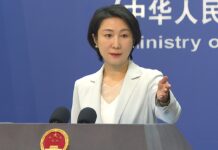Pakistan is one of the few lucky countries, both regionally and internationally, that has somehow managed to fend off the worst effects of Covid-19. This has enabled the government to keep the economy largely open. The country’s largest exporter, the textile industry, has greatly benefited from this as regional players, where the pandemic has done significantly more damage, were forced to remain closed for longer. Orders from importers started flowing as a result and most major textile companies are currently operating at 100 percent capacity, looking to expand and accommodate rising demand for their products. A 10.79 percent year-on-year increase in textile exports was recorded in January 2021 and some companies have pre-booked orders up to June this year.
With the vaccine rollout now in full swing, competing countries like Bangladesh and India have begun opening up their industries and will pretty soon be vying to win back their lost customers by exhausting all the competitive advantage at their disposal. A lower cost of production and a line of added-value finished textile goods allow competing textile exporters to offer much more attractive rates for a variety of better quality products. Cotton, a basic raw material that was once widely produced in the country, is in very short supply and is being imported as the agriculture sector no longer finds it an economically feasible crop. Exporters are currently buying the commodity from the US, Brazil and Uzbekistan, which has added around $1.1 billion to the import bill. A positive diplomatic development of a meaningful ceasefire along the LoC with India last week has reportedly created the possibility of limited trade to resume with the country, most notably the import of cotton, which is expected to commence soon.
Exporters would have access to cheaper readily available cotton that would take less time to reach Pakistan, thereby cutting cost and lead times. Cheaper cotton alone however, is not enough to maintain the trend of rising exports. The export sector has to resolve systemic problems that are still prevalent to achieve meaningful sustainable growth, a preference to produce unsophisticated low value-added items being one of them. The government also has to play its due role in supporting the industry rather than simply announcing ‘export packages’ that aren’t implemented and followed through. Short of a strategy of investment by companies in more capacity to produce a wider array of textile products that is incentivized and facilitated by the state, consistent organic growth will remain hard to achieve.






















